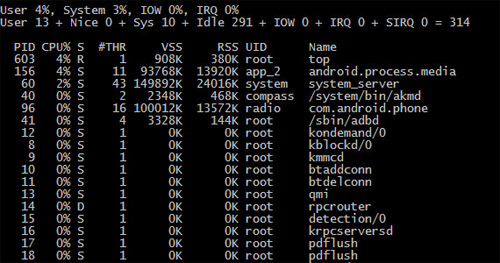(Rooting for Dummies: A Beginner’s Guide to Rooting your Android Device )
Rooting your Android phone is a term that you are bound to across at some point or another while searching on how to optimize your Android device. With millions of new Android owners each month we decided to give a basic introduction into the world of rooting and to let you decide if it’s something you’d like to do.
What is Rooting?
Rooting is the process by which you regain administrative access to your phone. Even though Android is an open source operating system you still don’t have full “root access” to do what you please. Back when the iPhone launched in 2007 the hardcore techies quickly realized the true potential of the device, and the cruel software limitations that Apple had sealed it with. What became ‘Jailbreaking’ on iPhone was quickly translated to other platforms as well, and when the world saw the first Android back in 2008, the term “Rooting” was born.
Why Root your Android Phone/Tablet?
 The main reason people root their Android device for freedom and control, when you root your Android phone or tablet you gain full control over your system and can tweak it to your liking.
The main reason people root their Android device for freedom and control, when you root your Android phone or tablet you gain full control over your system and can tweak it to your liking.
Improved Performance: You can speed up your Android device by relocating your phones cache thus allowing you to save phone memory and have a faster phone. There are applications available in the Android Market that will allow you to overclock your device to make it go as fast as you dare.
Alter System Files: You can replace many parts of the “Android Core” which include the ability to add new themes, edit the core apps (maps, calendar, clock, etc), change the recovery & boot images, add linux binaries.
More Application Choics: You will be able to install apps that are only compatible with rooted phones, some of these apps include an app that will allow you to take a screenshot on your phone, overclock your device and tether apps.
Install applications to your SD CARD: One of the most talked-about feature (or disadvantage) of any Android device is the limitation where you can install applications only in the phone’s internal memory and not the SD card. While Google may reason that SD cards are slower in general and cannot run apps as effectively as internal memory, fact of the matter is that most Android devices do not come with massive internal storage spaces, and hence greatly limit the number of applications that can be installed at a time. With rooted devices, you can use Apps2SD, which will copy ALL your applications to a ext2/3/4 formatted SD card an will also store future builds in card. Freedom to choose!
Latest Android OS (Operating System): With many carriers holding back the updates to the latest Android operating system, rooting your device will give you the option to install any current and future OS’s by installing custom-tailored ROMs.
WI-FI and Bluetooth Tethering: After having rooted your device, you can also use WiFi or Bluetooth tether to share your cellular data connection with your laptop or PC. The application works with ad hoc connections and will get you up and running online on your laptop in no time. Similarly, tethering can also be achieved over a Bluetooth connection.
How to Root Your Phone/Tablet?
To Root your phone you will have to download an application from the internet, the most popular apps areSuperOneClick, Z4Root and Universal AndRoot. The procedure for rooting an Android device varies from device to device as such there are many different device specific guides. Website AddictiveTips has put together the largest guide for rooting phones that we found. Some other good resources for finding rooting guides include the XDA Developers Forums & this topic at AndroidForums. In most cases the Rooting procedure is as easy as a couple of clicks, of course there are nightmare stories and people having difficulties, so read on about the risks of rooting.


What are the risks of Rooting?
Rooting your phone does come with some risks, the most notable risk is that you will void any warranty that you have on your device. However you may be able to find the stock rom for your device in which case you can reverse the rooting and make your phone stock again. You may have difficulty finding the stock ROM for your device, it all depends on your device, but it’s something worth finding before you do root.
Other then the voiding your warranty, there isn’t that much risk involved. There have been some users onAndroid forums that have run into problems, bricking your device is a possibility if a freak accident occurs while flashing archives. You should however not run into any problems, most users report the process as being a painless easy process.
Rooting your device can be a fun process, giving you the freedom and control to take your phone to a whole new level of function. We do recommend that you do your due diligence to ensure the rooting process goes as smoothly as possible. What are your thoughts on rooting? Was it an easy experience? Do you recommend it to others? We’d love to hear your thoughts.




